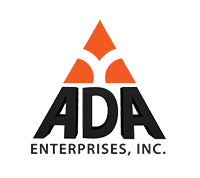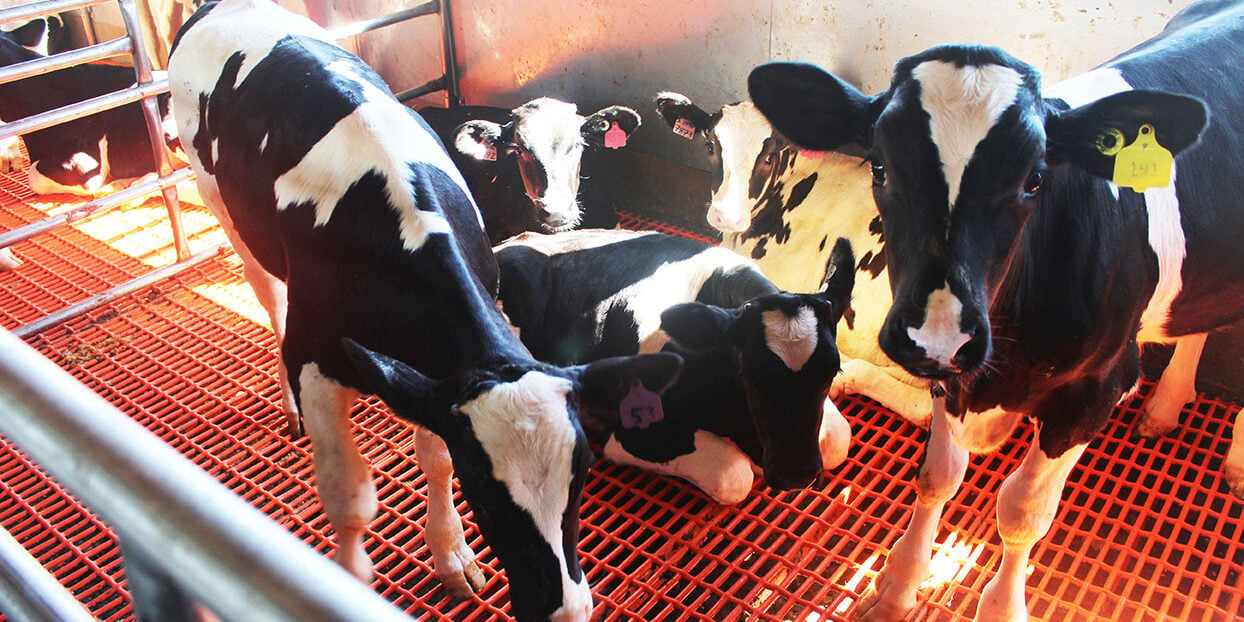Introduction: Rethinking Barn Floors for Dairy Cross Calves
In modern dairy housing facilities, the choice of flooring surface plays a critical role in promoting animal welfare, reducing injury risk, and supporting efficient operations. While concrete floors remain the most prevalent flooring surface, they present known challenges—particularly for dairy cross calves.
At ADA Enterprises, we believe long-term success starts with smart infrastructure decisions. That’s why we’re spotlighting Raised expanded metal flooring for dairy cross calves—a solution that balances foot and leg health, hygiene, and durable flooring surfaces.
This guide explores how raised floor systems compare to other alternative flooring surfaces, including rubber flooring, rolled rubber flooring material, concrete flooring, and more.
Traditional Concrete Surfaces: Durable but Problematic
The Drawbacks of Concrete in Calf Barns
The use of concrete slab on grade and grooved concrete surfaces in barn floors is widespread across the dairy industry. While a traditional concrete surface offers structural stability, it comes with well-documented risks:
- Sharp or rough edges from aging or poorly finished older concrete floors
- Hoof lesions caused by prolonged standing on extremely hard floor surfaces
- Slip hazards from wet, smooth surfaces or ineffective floor slope specifications
- Accumulation of waste at scraped manure drop sites, especially with green concrete or unfinished floors
Even quality grooved floors, when not maintained or properly installed, can contribute to cow slip hazard, pressure injuries, and hygiene issues—especially when combined with uneven or adjacent concrete surfaces.
Raised Flooring: An Optimum Alternative for Calf Health
Why Raised Floors Make Sense
Raised expanded metal and welded rod flooring for dairy cross calves is emerging as an optimum alternative flooring surface that directly addresses the shortcomings of concrete. These systems are designed to:
- Promote cleanliness by separating calves from waste
- Reduce standing time on wet concrete
- Improve hoof comfort and reduce foot and leg health issues
- Minimize bacteria buildup around rubber floor perimeter or joints
In addition to improved hygiene, a raised floor naturally integrates with dairy feeding systems management and housing systems by offering better manure handling, reduced cleaning labor, and longer service life.
Comparing Flooring Systems: Rubber, Epoxy, and Reinforced Belting
Rubber Flooring Systems
Rubber flooring surfaces such as rubber mats, rolled rubber flooring, and reclaimed rubber belting are often marketed for comfort. However, they require precise installation and upkeep:
- Moisture and waste can become trapped under the rubber flooring system if the slope and drainage are insufficient
- Edges may lift, especially with ground post-consumer rubber or unanchored mats
- Dragging concrete blocks or feeding equipment can cause tearing or shifting
Concrete Flooring Systems
Concrete floors are durable and economical. Still, they can potentially cause joint and hoof issues, maintain moisture, and are cold in the winter. They also lack the waste separation benefits of raised floors.
Reinforced Belting Options
Systems using carbon steel reinforced belts or metal cable reinforced belting offer strength and flexibility but are complex to install and often cost-prohibitive.
While these alternative flooring surface options provide certain benefits, they fall short in durability, hygiene, or long-term maintenance when compared with raised flooring systems.
Raised Floors and Surface Integration Best Practices
Combining Raised and Concrete Surfaces
Many barns still require transitions between concrete surfaces and raised floors, especially near center cow decks, feed alleys, or adjacent concrete surfaces.
Best practices include:
- Smoothing transitions to prevent cow slip hazard
- Ensuring seamless waste flow to scraped manure drop sites
- Aligning slope and drainage per floor slope specifications from the Livestock Waste Facilities Handbook
- Avoiding concrete material displaced by improper installation or equipment load
Integrating materials correctly supports both animal welfare and facility longevity.
Economic and Environmental Considerations
Investing in raised flooring for dairy cross calves also supports better long-term ROI:
- Lower maintenance costs vs. replacing rubber mats or using straw bedding
- Better compatibility with automated waste systems
- Enhanced calf health reduces veterinary costs and loss
- Extended lifecycle compared to alternative flooring surfaces solely intended for short-term use
Additionally, raised flooring systems reduce the need for managing excess runoff from wet concrete or spilled manure—aligning with sustainability goals tied to economic and environmental factors.
Final Thoughts: Prioritizing Calf Health Through Smarter Flooring
ADA Enterprises understands that a well-designed flooring surface is about more than durability—it’s about calf development, barn cleanliness, and operational efficiency.
With raised flooring systems, you reduce common challenges seen in prevalent flooring surfaces like concrete and rubber while promoting animal welfare from day one.
Contact ADA Enterprises
Ready to rethink your flooring system? Contact ADA Enterprises to explore durable flooring surfaces made from first-rate steel and completely coated with plastisol (polyvinyl, plastic) for unmatched resistance and longevity.
We’ll help you find the best flooring solution for your facility—and for the health of your calves.







